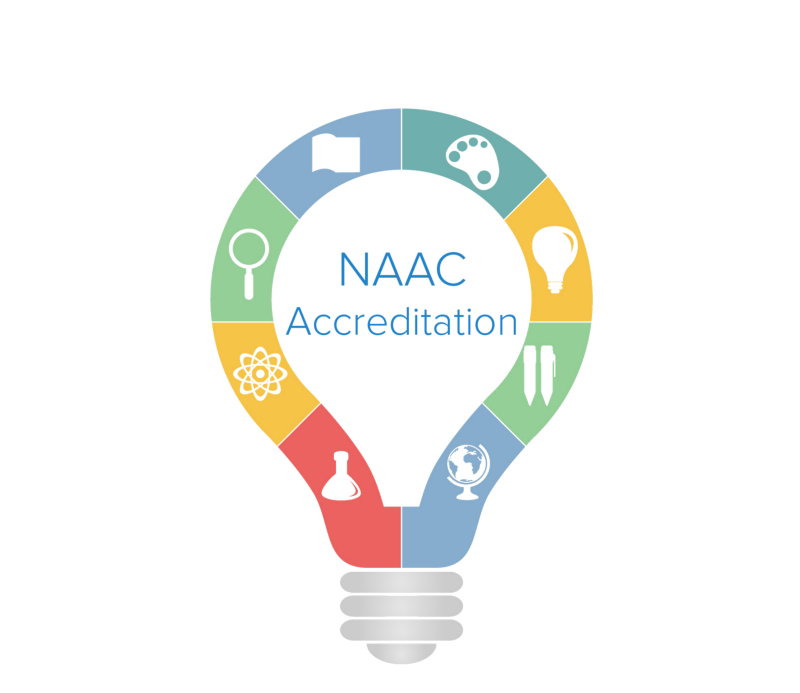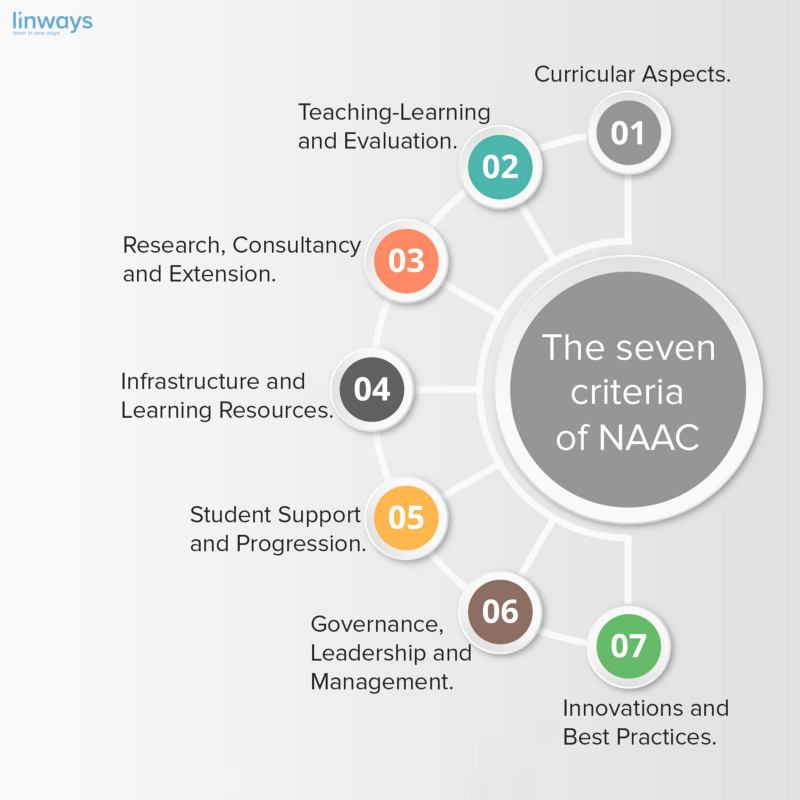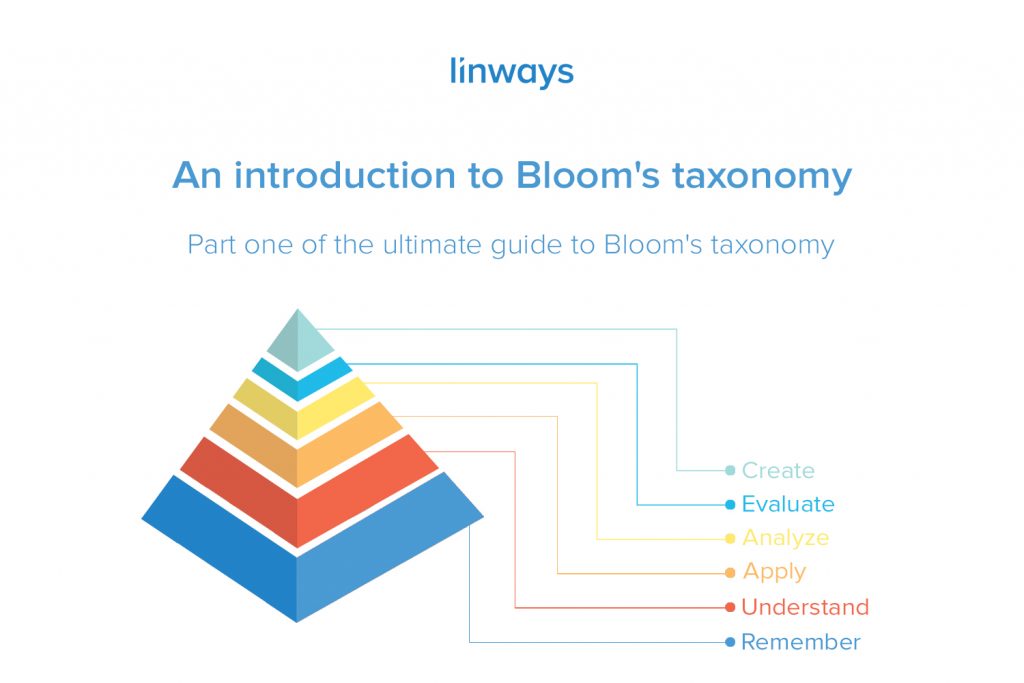
Education plays one of the most important role in the development of a nation. It shapes the politics, literacy, technology, agriculture, economics, and pretty much everything else that defines the sustenance of a nation. Education is crucial in creating a national mould for defending the interests of the country and of the world as a whole.
These are just some of the reasons why we should put in our maximum efforts to develop a sound culture in learning and research. Assuring the quality and desirable outcomes of our education is thus very important. Usually, assessments and accreditation done by various organisations by evaluating educational institutions and providing quality assurance certificates does this.
The NBA, NAAC, etc. are some of the most prominent organisations that do these kinds of accreditation in India, along with governmental bodies like the NIRF that provides a ranking frameworks. On the other hand, organisations like the ABET does the same in a global level.
Accreditation
This article is the first post of the blog series that we are publishing on the NAAC accreditation and everything you need to know about it.
For those of you who don’t know what NAAC is, the National Assessment and Accreditation Council (NAAC) is an autonomous body founded by the University Grants Commission (UGC) for assessing and accrediting higher educational institutions in India. The NAAC, established in 1994, has its headquarters in Bangalore.
The words ‘assessment’ and ‘accreditation’ are broadly described as the terms of recognition and certification provided by some agency or body that assures the quality status of an educational institution. In the case of higher educational institutions (HEI), it means that the college or the university has met the quality standards proposed by the accrediting agency. This mostly includes assuring compliance with the norms set by the accrediting agency such as
- course/program outcomes,
- teaching-learning mechanisms,
- Curriculum,
- faculty qualification and research,
- infrastructure,
- resources,
- organisational structure of the management,
- financial well-being etc.
NAAC
The NAAC functions through its General Council (GC) and Executive Committee (EC) represented by a cross-section of educational administrators, policy makers and senior academicians of the country. It’s vision is to “make quality the defining element of higher education in India through a combination of self and external quality evaluation, promotion and sustenance initiatives”.
The NAAC accredits institutions, not programs, unlike the NBA. The eligibility criteria for the institutions which can apply for a NAAC accreditation are;
“Universities (Central/State/Private/Deemed-to-be) and Institutions of National Importance
- If the campus is in the country, and is being treated as part of the universities / Institutions of National Importance for the A&A process.
- NAAC will not undertake the accreditation of off-shore campuses.
Colleges (i.e., colleges/institutions affiliated to, or constituent of, or recognized by universities, including autonomous colleges)
- Colleges/institutions offering programmes recognized by professional regulatory councils also are eligible for Assessment and Accreditation (A&A) even if such colleges/institutions are not affiliated to any university.”
Department Accreditation: Any department/School/Centre of the University.
A broad overview of the process of accreditation
The process of accreditation by NAAC works in the following order;
- Preparation of Self-study Report (SSR), and uploading it on the institution website.
- On-line submission of the Letter of Intent (LOI).
- On-line submission of ‘Institutional Eligibility for Quality Assessment’ (IEQA) for applicable institutions.
- Submission of Hard Copies of SSR
- Peer team visit to the institution.
- Final decision by NAAC.
When an institution undergoes the accreditation process for the first time it is referred to as Cycle 1 and the consecutive five year periods as Cycle 2, 3, etc.
Assessment
The assessment by NAAC primarily focuses on three aspects while evaluating an institution;
- Quality initiative,
- Quality sustenance
- and Quality enhancement.
The A&A process of NAAC involves a combination of self evaluation and external peer evaluation. NAAC is more concerned about the developmental aspects of the institution in the context of quality. Self-evaluation is crucial in the process of A&A. It has a tremendous contribution in promoting objectivity, self-analysis, reflection and professionalism on the part of higher educational institutions (HEI). The self-evaluation proforma of NAAC provided as “manuals for self study” intend to discuss this input-process-output mechanism.
Also, the Self-Study Report (SSR) which the institution submits during the A&A is expected to serve as a catalyst for institutional self-improvement, and promote innovation.
Criteria and key aspects for assessment
The criteria-based assessment of NAAC forms the backbone of the assessment and accreditation (A&A). Seven criteria are formulated to represent the core functions and activities of an institution.
They focus on the issues which have a direct impact on teaching-learning processes, research, community development, and the development of the students. The seven criteria to serve as the basis for assessment of HEIs are:
- Curricular Aspects.
- Teaching-Learning and Evaluation.
- Research, Consultancy and Extension.
- Infrastructure and Learning Resources.
- Student Support and Progression.
- Governance, Leadership and Management.
- Innovations and Best Practices.

These criteria work as a framework around which the process of A&A is carried out. It provides a judgement based evaluation over the various key aspects on the quality standards of the institution. It is very important that the institutions going through the accreditation complies with these.
We will discuss about the process of accreditation and dive deeper into each criterion on the coming blogs of this series.
About us:
We are Linways Technologies Pvt.Ltd, a cloud-based Academic Management System (AMS) provider.
Oh and by the way, click on the link to read our blog series on National Board of Accreditation (NBA): National Board of Accreditation: What, Why, and How.




